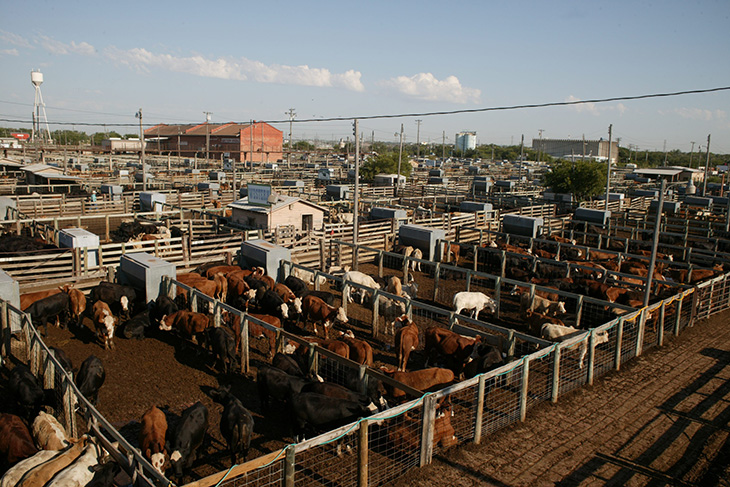
Cattle on feed ‘moving average’ at highest level since September 2012
Monday, August 27, 2018
The USDA cattle-on-feed report shows the Aug. 1 feedlot inventory was 11.09 million head, an increase of 4.6 percent compared to one year ago and the largest August on-feed total in the data series going back to 1996.
Totals seem to be following the typical seasonal tendency of feedlot inventories to bottom in September before climbing in the fourth quarter, as this year’s August total decreased from a month earlier.
“However, the 12-month moving average of cattle on feed – which removes the seasonality of feedlot inventories – is currently at the highest monthly level since September of 2012,” said Derrell Peel, Oklahoma State University Cooperative Extension livestock marketing specialist. “July feedlot placements and marketings were both above year-ago levels, in part due to an extra business day in July 2018 compared to last year.”
Placements were 107.9 percent of last year, at the upper end of the range of pre-report estimates. Most of the year-over-year increase in July placements was cattle weighing less than 700 pounds, with these lighter-weight placements accounting for 82.7 percent of the total placement increase.
“It’s possible that some of the increase in lightweight placements was due to drought-related early sales of feeder cattle,” Peel said. “Total feedlot placements for the first seven months of 2018 are close to year-ago levels, up 0.2 percent for the year to date.”
July marketings were 105 percent of year-earlier levels and, when adjusted for the extra July day this year, daily average marketings were equal to last year. Total feedlot marketings for January through July are up 2.9 percent year over year. The 12-month moving average of feedlot marketings is at the highest level since October 2011.
“Feedlot marketings have outpaced placements this year, which is helping hold monthly feedlot inventories in the range of 4 percent to 5 percent higher year over year since May,” Peel said. “Feedlots have remained current this year continuing a strong performance that began in 2017.”
Peel said a 13-pound drop in steer carcass weights in 2017 illustrates feedlot timeliness that helped offset larger cattle slaughter last year. While steer carcass weights are up 5.3 pounds for the year to date, carcass weights increased only 1.75 pounds year over year in the past eight weeks, indicating feedlots, in general, remain current.
Heifer carcass weights have increased 8.4 pounds so far this year after declining by 11 pounds in 2017. Heifer carcass weights continue to grow relative to steers, up 8.25 pounds year over year during the last eight weeks.
“The annual average of heifers as a percent of steer carcass weights has pushed to new record highs each of the last three months,” Peel said. “Total cattle slaughter is up 3.2 percent for the year to date, led by continued sharply higher female slaughter.”
Heifer slaughter has increased 8.5 percent year over year for the first 32 weeks of 2018 while beef cow slaughter has increased 11.5 percent thus far. Dairy cow slaughter is up 4.1 percent year over year and is creeping higher recently.
Peel believes heifer slaughter will likely show less year-over-year increase for the remainder of the year compared to large end-of-year slaughter in 2017 but will likely remain up 4 percent to 5 percent for the year.
Steer slaughter continues to run slightly below the large year-ago levels, down 0.9 percent for the year to date. Peel said steer slaughter will likely be up year over year for the remainder of 2018 and finish with an annual total above last year. Year-to-date beef production is up 3.2 percent in 2018 with modest increases in steer beef production moderating increased slaughter and carcass weights of heifers and cows.
Cash receipts for Oklahoma cattle typically total in excess of $3.7 billion annually, according to USDA National Agricultural Statistics Service data. Oklahoma is the nation’s fifth-leading producer of cattle and calves.
The Oklahoma Cooperative Extension Service is one of two state agencies administered by the OSU Division of Agricultural Sciences and Natural Resources, and is a key part of the university’s state and federally mandated teaching, research and Extension land-grant mission.
